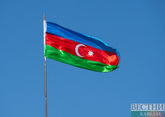The path to renewal and peace will be long. Can art and culture play a role? In the ceasefire deal brokered this week, Azerbaijan regained control of the city of Shusha, which is steeped with cultural significance to both countries. Artnet.com reports in its article As War Between Armenia and Azerbaijan Is Averted, Artists There Look to the Future that Azerbaijan’s ministry of culture has pledged to preserve mosques and other Islamic monuments in the region: “The Christian heritage, irrespective of its origin will also be preserved, restored and put into operation at the highest level.”
On Friday, the Azeri deputy minister for culture tweeted that a historic church in the region, the Khudavang monastery, also known as the Dadivank monastery, was built in the 9th to 13th century by Albanian royalty.
“Shusha has always been the heart of Azerbaijani culture,” says Faig Ahmed, an artist living and working in Baku, Azerbaijan. He says he has already begun planning an art exhibition in Shusha.
International bodies are urging both sides to avoid incurring further damage to cultural heritage, regardless of who it belongs to. “UNESCO expresses its grave concern with the continuing escalation of violence in the Nagorno-Karabakh conflict zone, which is causing rising civilian casualties and inflicting damage on civilian infrastructure, including schools, cultural and religious sites, and also affecting the safety of journalists,” read a statement from the organization in September.
Some artists from the region say they are using their work as a source of healing and a path through the trauma, while others feel that the fighting has made creativity feel impossible.
Babi Badalov, an Azerbaijani artist based in Paris, says that watching the conflict has been devastating for his “artistic soul.” He says that the broader cultural community outside of the region is biased and largely ignorant to the nature of this conflict. He has been focusing on his installation Culture is Future, which imagines a fresh start without cultural pasts and racial tensions, in a borderless world. “It imagines how we could create a common human heritage on Earth,” he tells Artnet News.
Anush Zeinalian, an art manager based between the Armenian capital of Yerevan and Venice, Italy, volunteered on the front lines at the beginning of the conflict. Now, it is difficult to develop art projects in Armenia, she said, given the national state of mourning. “I have passed through many stages of trying to identify my own personal strategy in this time of war,” she said. “After some time, I was able to bring myself back from that apathy and concentrate on a project with artists that I had committed to before.”
Though it may still be far off, art could be a forum for thawing tensions. Azerbaijani artist Sitara Ibrahimbayli hopes that communication could begin again between Armenian and Azerbaijani artists. “I think that the most important thing is, first of all, the study of each other’s history and culture, based on independent sources,” she said. “Only after hatred is replaced in the consciousness by curiosity, everything will become much easier and more humane.”
Sereg Navasardyan, an artist in Yerevan, says that art has been a way to communicate his experiences of the war. “We and our neighbors have a lot of cultural commonalities. Art is a very important medium to talk about problems, to share thoughts and worries that are universal,” he said.
Navasardyan points out that there are important cultural commonalities between Armenians and Azerbaijanis. “Because we have lived side by side for so long, we have shared almost every aspect of our societies. But the border conflict has brought up a battle not only over land, but differing cultural ‘values,'” he said. “I hope that at some point we will realize that there is no ‘mine’ and there is no ‘theirs,’ but there is ‘ours’ instead. This can be the key to understanding and resolving a conflict.”










